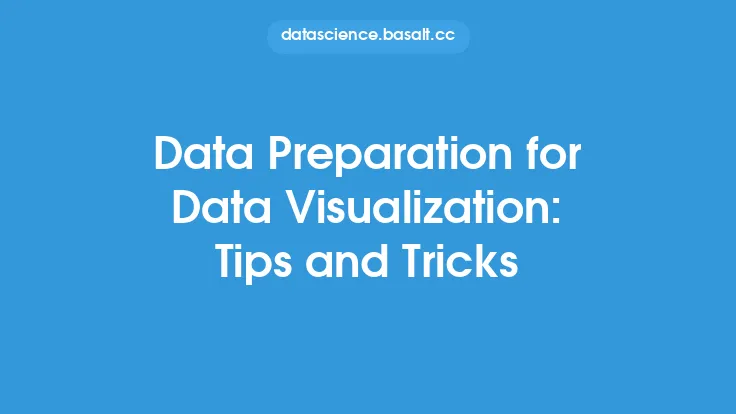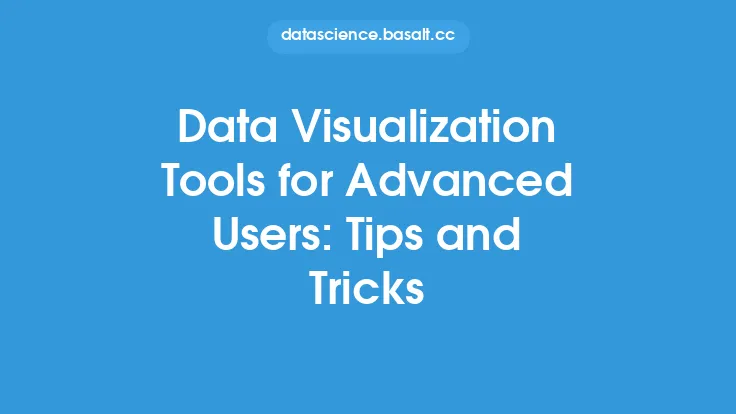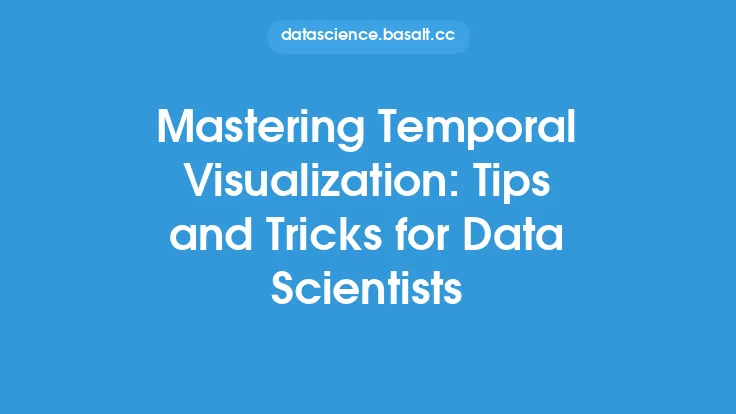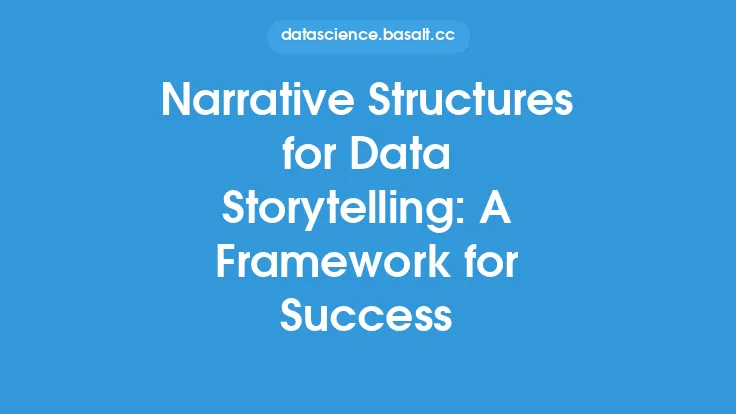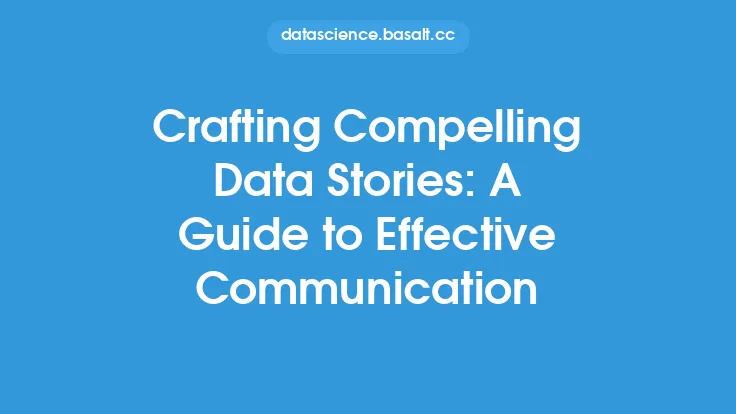In the realm of data storytelling, crafting a compelling narrative is crucial for conveying insights and driving decision-making. A well-crafted data narrative has the power to captivate audiences, convey complex information, and inspire action. However, creating an effective data narrative requires a combination of technical skills, creativity, and strategic thinking. In this article, we will delve into the world of data-driven narrative techniques, exploring the tips and tricks necessary for success.
Understanding the Fundamentals of Data Narrative
To craft a compelling data narrative, it's essential to understand the fundamental elements that comprise a narrative. A data narrative typically consists of a clear structure, including an introduction, body, and conclusion. The introduction sets the stage, providing context and background information. The body presents the main findings, using data visualizations and storytelling techniques to convey insights. The conclusion summarizes the key takeaways, highlighting the implications and recommendations. A well-structured narrative is critical for engaging audiences and conveying complex information in a clear and concise manner.
Selecting the Right Data Visualization Tools
Data visualization is a critical component of data narrative, enabling the effective communication of complex data insights. The choice of data visualization tool depends on the type of data, the story being told, and the audience. Common data visualization tools include bar charts, line graphs, scatter plots, and heat maps. Each tool has its strengths and weaknesses, and selecting the right tool is essential for conveying the intended message. For example, bar charts are ideal for comparing categorical data, while line graphs are better suited for showing trends over time. By selecting the right data visualization tool, data storytellers can create engaging and informative narratives that resonate with their audience.
Crafting a Compelling Storyline
A compelling storyline is the backbone of a successful data narrative. A storyline should be clear, concise, and relevant to the audience. It should also be supported by data, using visualizations and statistics to illustrate key points. A good storyline typically follows a narrative arc, including a setup, confrontation, and resolution. The setup provides context and background information, the confrontation presents the challenge or problem, and the resolution offers a solution or recommendation. By crafting a compelling storyline, data storytellers can create a narrative that engages and persuades their audience.
Using Storytelling Techniques to Enhance the Narrative
Storytelling techniques are essential for enhancing the data narrative and making it more engaging. Techniques such as anecdotes, metaphors, and analogies can be used to illustrate complex concepts and make the narrative more relatable. For example, using a personal anecdote can help to create an emotional connection with the audience, while a metaphor can simplify a complex concept and make it more accessible. Other techniques, such as foreshadowing and cliffhangers, can be used to create suspense and keep the audience engaged. By incorporating storytelling techniques into the data narrative, data storytellers can create a more engaging and memorable narrative.
Creating an Emotional Connection with the Audience
Creating an emotional connection with the audience is critical for a successful data narrative. An emotional connection can be created by using storytelling techniques, such as anecdotes and metaphors, to illustrate the human impact of the data. It can also be created by using data visualizations that evoke emotions, such as images or videos. Additionally, using a conversational tone and language that resonates with the audience can help to create a sense of connection and community. By creating an emotional connection with the audience, data storytellers can increase the impact and memorability of the narrative.
Measuring the Effectiveness of the Data Narrative
Measuring the effectiveness of the data narrative is essential for evaluating its impact and identifying areas for improvement. Metrics such as engagement, retention, and conversion can be used to evaluate the success of the narrative. Engagement metrics, such as time on page and scroll depth, can indicate how well the narrative is holding the audience's attention. Retention metrics, such as return visits and social shares, can indicate how well the narrative is resonating with the audience. Conversion metrics, such as clicks and downloads, can indicate how well the narrative is driving action. By measuring the effectiveness of the data narrative, data storytellers can refine their approach and create more effective narratives in the future.
Best Practices for Data-Driven Narrative Techniques
Best practices for data-driven narrative techniques include using clear and concise language, selecting the right data visualization tools, and crafting a compelling storyline. It's also essential to create an emotional connection with the audience, use storytelling techniques to enhance the narrative, and measure the effectiveness of the narrative. Additionally, data storytellers should consider the audience, purpose, and context of the narrative, tailoring the approach to meet the specific needs and goals of the project. By following these best practices, data storytellers can create effective and engaging data narratives that drive insight and action.
Advanced Techniques for Data-Driven Narrative
Advanced techniques for data-driven narrative include using interactive and dynamic visualizations, such as dashboards and simulations. These techniques enable the audience to explore the data in more depth, creating a more immersive and engaging experience. Other advanced techniques include using machine learning and artificial intelligence to analyze and visualize complex data sets, and using virtual and augmented reality to create interactive and experiential narratives. By using these advanced techniques, data storytellers can create innovative and cutting-edge narratives that push the boundaries of data storytelling.
Conclusion
Crafting a compelling data narrative requires a combination of technical skills, creativity, and strategic thinking. By understanding the fundamentals of data narrative, selecting the right data visualization tools, crafting a compelling storyline, and using storytelling techniques to enhance the narrative, data storytellers can create engaging and effective narratives. Additionally, creating an emotional connection with the audience, measuring the effectiveness of the narrative, and following best practices can help to ensure the success of the narrative. By mastering these techniques and staying up-to-date with the latest advances in data storytelling, data storytellers can create innovative and impactful narratives that drive insight and action.
